What Is Behind the Budgerigar (Budgie)’S Behavior and Temperament?
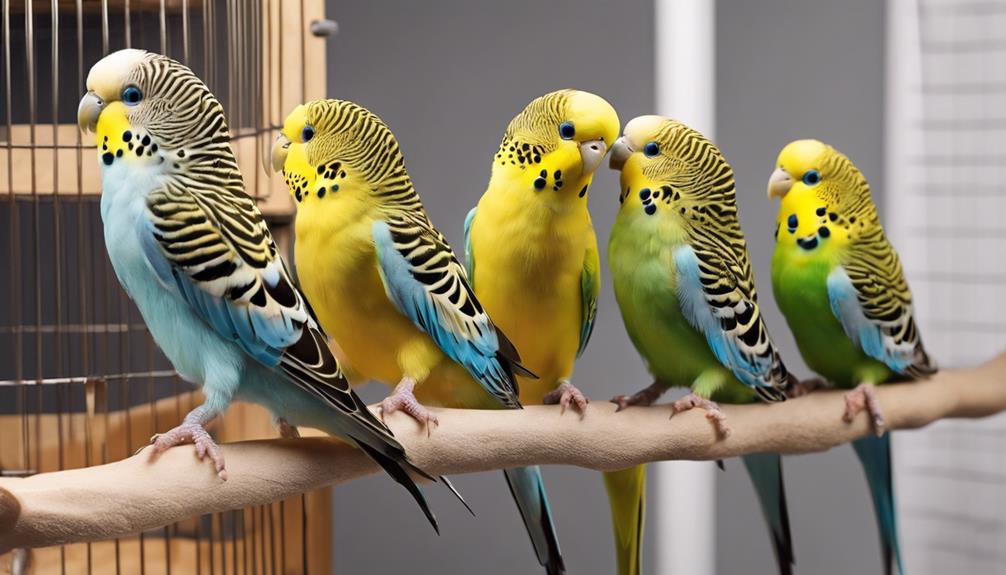
The behavior and temperament of budgerigars (budgies) are shaped by their origins, evolution, and intricate social dynamics.
These factors offer a fascinating glimpse into the complexity of these beloved avian companions.
Origins and Evolution of Budgerigars
Budgerigars, commonly known as budgies, have a fascinating evolutionary history that traces back to the grasslands of Australia. Their evolutionary adaptation to this environment has shaped various aspects of their behavioral ecology. These small parrots have developed unique traits over time that have allowed them to thrive in their natural habitat.
In terms of evolutionary adaptation, budgerigars have developed specialized beaks that help them crack open seeds, their primary food source. This adaptation has been crucial for their survival in the arid landscapes they inhabit. Additionally, their vibrant plumage serves both as a means of camouflage and as a way to attract potential mates, showcasing the intricate balance between survival and reproduction in their evolutionary journey.
When considering their behavioral ecology, budgerigars exhibit complex social structures within their flocks. Understanding these dynamics provides insight into how they communicate, forage, and protect themselves from predators. By studying the origins and evolution of budgerigars, one can gain a deeper appreciation for the intricate relationship between these birds and their environment.
Understanding Budgie Social Behavior
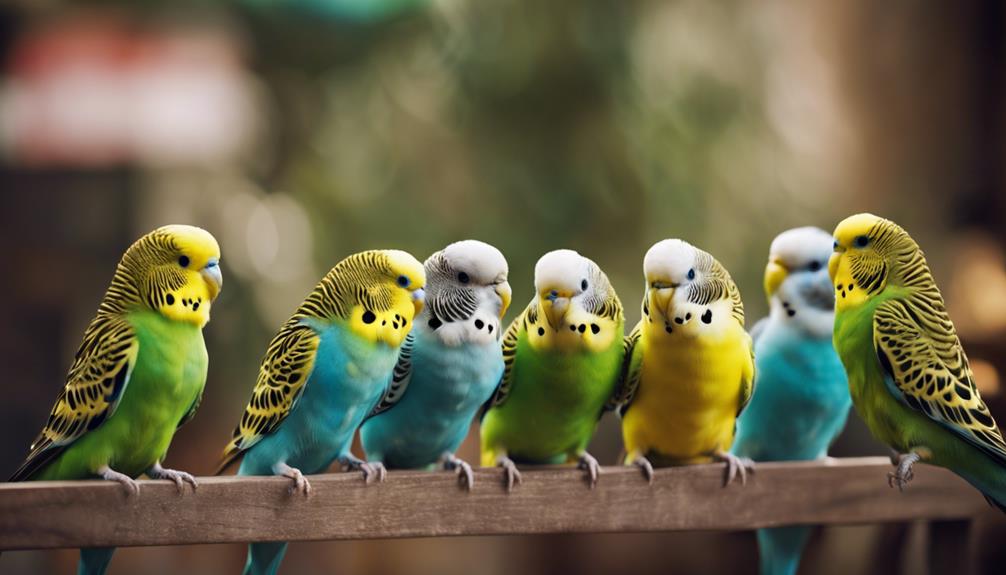
Observing budgies in their natural habitat reveals intricate social behaviors that highlight their complex communication and flock dynamics. Budgies are highly social creatures, displaying fascinating social dynamics within their flocks. In the wild, these birds form strong bonds with their flock members, emphasizing the importance of bonding and companionship in their social structure. Social interactions among budgies include preening each other, vocalizations to communicate within the flock, and engaging in synchronized movements during flight.
Flock behavior is integral to budgie society, providing them with safety, companionship, and opportunities for learning from one another. Within the flock, budgies establish hierarchies based on factors like age, experience, and personality. This hierarchical structure helps maintain order and cohesion within the group, ensuring each budgie knows its place and role in the social fabric.
Understanding budgie social behavior offers insights into their needs for companionship, interaction, and communication. By appreciating the intricacies of their flock dynamics, we can better cater to these social creatures’ requirements in captivity, fostering their well-being and happiness.
Factors Influencing Budgie Temperament
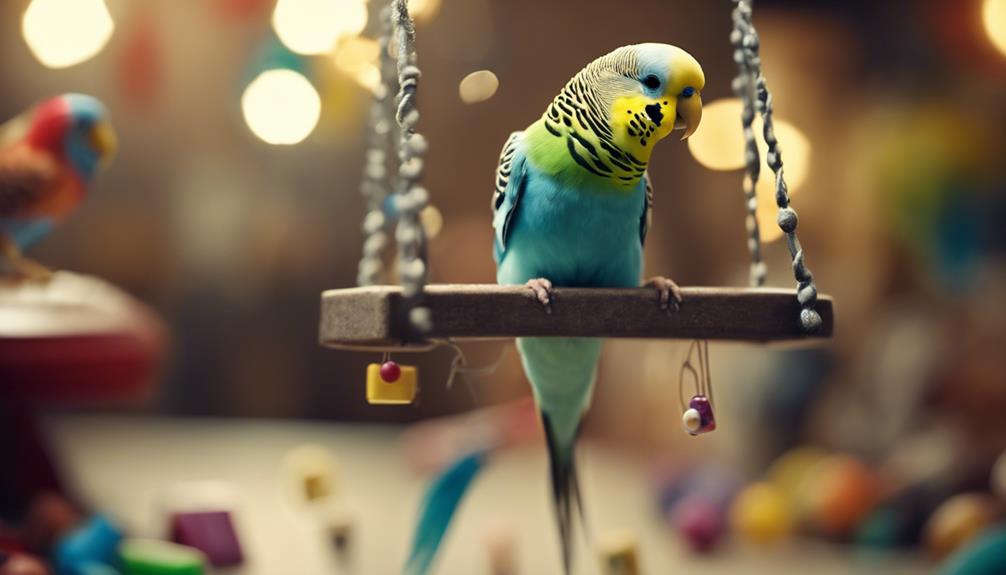
Factors influencing budgie temperament encompass a variety of environmental, genetic, and social elements that shape their behavior and personalities. Genetic predispositions play a significant role in determining a budgie’s temperament. Just like humans inherit certain traits from their parents, budgies can also inherit specific behavioral tendencies. For example, some budgies may have a genetic predisposition towards being more vocal or sociable compared to others.
Environmental influences are equally crucial in shaping a budgie’s temperament. Factors such as the quality of care, social interactions, and living conditions can greatly impact how a budgie behaves. A budgie raised in a stimulating and nurturing environment is more likely to exhibit friendly and outgoing behaviors, while one raised in isolation or with limited enrichment may display signs of stress or aggression.
Understanding these genetic predispositions and environmental influences can help budgie owners create a supportive and enriching environment that fosters positive behaviors and a well-balanced temperament in their feathered companions.
Communication Patterns in Budgerigars
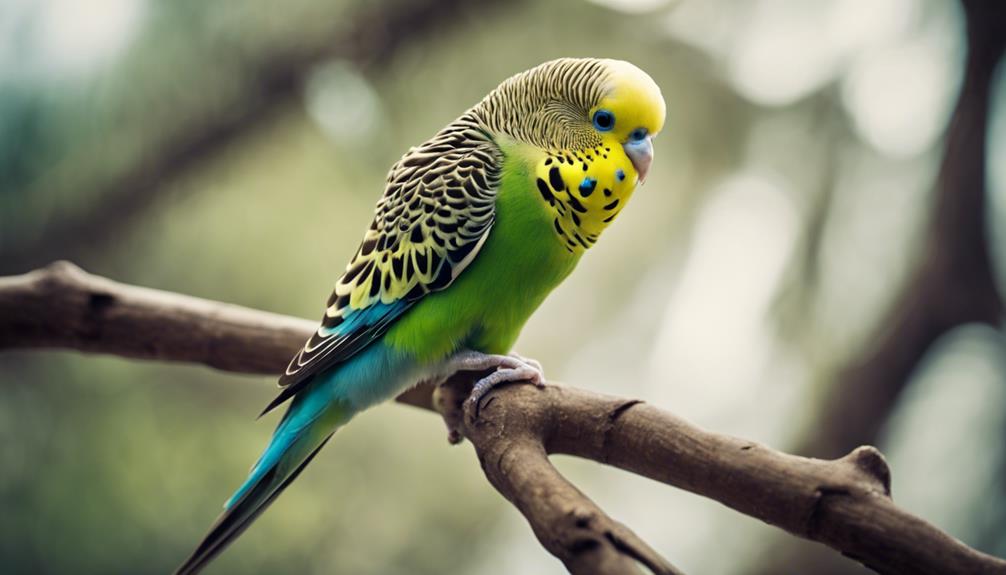
Budgerigars, commonly known as budgies, exhibit a diverse range of communication patterns. Their vocalizations and body language signals are essential components of their social interactions. Understanding these cues is vital for interpreting budgie behavior and strengthening the bond between pet and owner.
Budgerigars communicate through various vocalizations, including chirps, whistles, and squawks. Each sound conveys a different message, such as calling for attention, expressing contentment, or signaling distress. Observing the context in which these vocalizations occur can help decipher their meaning and respond appropriately to the bird’s needs.
In addition to vocalizations, budgies use body language to communicate. They may puff up their feathers to appear larger and more dominant or flatten them against their body to show submission. Understanding these visual cues can provide valuable insights into a budgie’s emotional state and intentions.
Vocalizations in Budgies
Budgies express a wide range of emotions and intentions through their intricate vocalizations, displaying a remarkable ability to communicate effectively within their flock. Vocalization patterns in budgies play a crucial role in their socialization and flock dynamics. These vibrant birds use various sounds to convey messages, from cheerful chirps during play to distinct calls for warning or distress.
Mimicry is another fascinating aspect of their vocal repertoire, allowing them to imitate sounds they hear in their environment or learn from their human companions. By paying attention to the nuances in budgies’ vocalizations, one can gain insights into their moods, needs, and interactions with others in the flock. Understanding the significance of vocalizations enhances the bond between budgie owners and their feathered friends.
Body Language Signals
Observing the subtle shifts in posture and movement can provide valuable insights into a budgie’s current emotional state and intentions. Budgerigars, commonly known as budgies, communicate through a variety of body language cues. By understanding these signals, caregivers can better comprehend their feathered friends’ needs and feelings. Training plays a crucial role in interpreting and responding to these gestures effectively. Budgies exhibit a wide range of temperaments, influenced by their socialization experiences and individual personalities. Proper socialization from a young age can help shape a budgie’s behavior and how they express themselves through body language. Below is a table highlighting some key body language signals in budgerigars:
| Body Language Signal | Meaning |
|---|---|
| Fluffed Feathers | Content or Illness |
| Rapid Head Bobbing | Excitement |
| Head Low with Tail Up | Playful |
| Puffed up with Eyes Closed | Relaxed |
Playful Behavior and Enrichment Activities
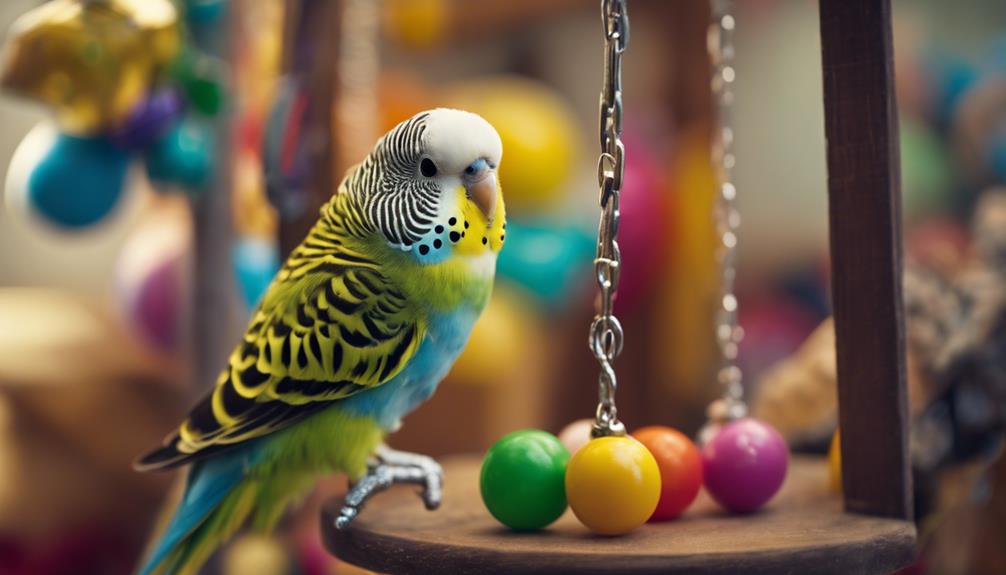
Budgies exhibit vibrant playful behavior, engaging in a variety of activities that stimulate their minds and bodies.
The provision of suitable toys and enrichment opportunities is crucial in keeping these intelligent birds mentally active and content.
Understanding the importance of mental stimulation through playtime can significantly enhance the well-being of budgerigars.
Playtime for Budgies
During playtime, budgies eagerly engage in various enrichment activities that showcase their playful behavior and intelligence. These small parrots enjoy interactive games such as mimicking sounds, solving puzzles, and even playing with toys that encourage mental stimulation.
Moreover, playtime provides budgies with essential exercise opportunities, allowing them to stretch their wings, hop around, and stay physically active. Observing budgies during play reveals their curiosity and social nature, as they often interact with their human companions or other budgies in a playful manner.
Toys and Activities
Engaging with a variety of toys and activities is essential for stimulating playful behavior and providing enrichment for budgies. Interactive play and environmental enrichment are crucial aspects of a budgie’s well-being.
Here are three items to consider:
- Rotate Toys Regularly: Introducing new toys and rotating them keeps the budgie’s environment fresh and exciting.
- DIY Foraging Activities: Creating homemade foraging toys engages the budgie’s natural instincts and provides mental stimulation.
- Interactive Playtime: Spending quality time playing with the budgie strengthens the bond between the bird and its owner, while also keeping the budgie physically and mentally active.
Mental Stimulation Importance
Regularly engaging in mental stimulation activities is crucial for maintaining a budgie’s playful behavior and overall enrichment. Budgies are intelligent birds that require mental stimulation to prevent boredom and ensure their well-being.
Providing a variety of toys, puzzles, and interactive activities can help keep budgies mentally engaged and prevent negative behaviors that may arise from lack of stimulation. Enrichment activities such as foraging toys, puzzle feeders, and training exercises not only stimulate a budgie’s mind but also promote physical activity, leading to a healthier and happier bird.
It’s essential for budgie owners to prioritize mental stimulation to ensure their feathered companions lead fulfilling lives filled with engagement and enrichment.
Aggression and Territorial Traits in Budgies
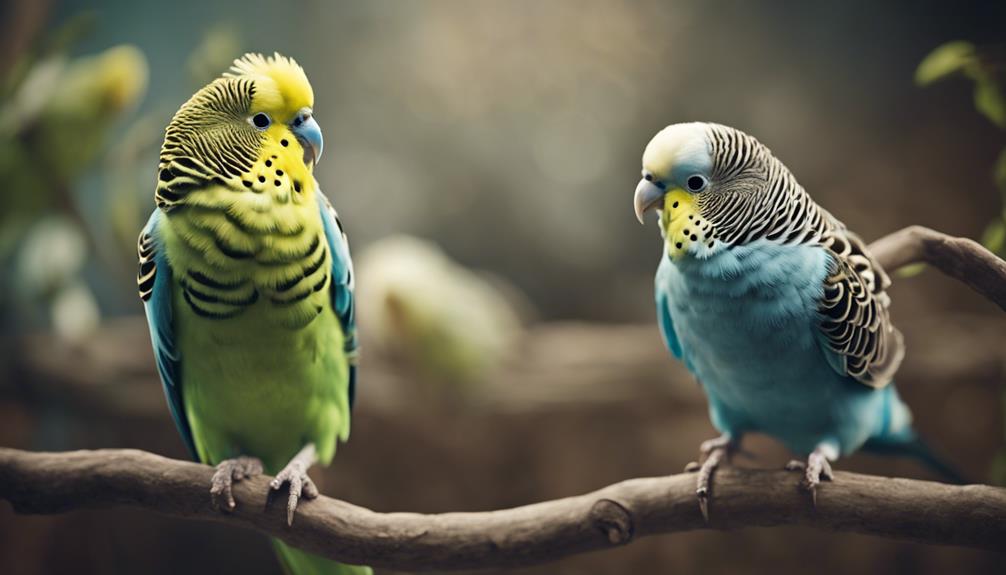
Manifestations of dominance and territorial behavior in budgies often stem from their natural instincts as flock animals. In the wild, budgies establish hierarchies within their flocks, with dominant individuals claiming territories for nesting and feeding. When kept as pets, these innate behaviors can sometimes manifest in ways that may seem aggressive or territorial to their human companions.
Budgies may exhibit territorial behavior by fiercely defending their cage or a particular perch from perceived intruders, which can include other pets or even their owners. Aggression in budgies can be triggered by factors such as sudden movements, loud noises, or feeling threatened in their environment. Implementing behavioral modification techniques and providing adequate socialization opportunities can help manage aggression and territorial tendencies in budgies. This may include positive reinforcement training, creating a safe and enriching environment, and ensuring regular interaction with their human caregivers.
Understanding and addressing these natural behaviors can help create a harmonious relationship between budgie and owner.
Training and Bonding With Budgerigars

Developing a strong bond with budgerigars through consistent training is essential for fostering a trusting and interactive relationship. Bonding techniques play a crucial role in establishing a connection with these intelligent and social birds. One effective method is positive reinforcement, where desired behaviors are rewarded with treats or praise, encouraging the budgie to repeat those actions. Consistency is key in training budgerigars, as they respond well to routines and predictability.
Training methods such as target training, where a budgie is taught to touch a target stick with its beak, can help build trust and improve communication between the bird and its owner. This technique can also be used to teach tricks and facilitate bonding. Additionally, spending quality time with your budgerigar, talking to them, and offering social interaction will strengthen the bond and enhance their overall well-being.
Frequently Asked Questions
Can Budgerigars Be Trained to Do Tricks or Perform Specific Behaviors?
Budgerigars can be trained to do tricks through clicker training and target training. Positive reinforcement and mental stimulation are key factors in teaching them specific behaviors. Their intelligence and social nature make them receptive to learning.
How Do Budgerigars Express Emotions Such as Happiness, Fear, or Boredom?
Budgerigars express happiness through chirping and fluffed feathers, fear with wide eyes and rapid movements, and boredom by repetitive behaviors. Vocal expressions and body language are key indicators, while environmental enrichment and social interactions play vital roles in their emotional well-being.
Are There Any Specific Toys or Activities That Are Known to Be Particularly Stimulating or Enriching for Budgerigars?
Enrichment ideas for budgerigars include interactive toys like puzzle feeders and mirrors. Mental stimulation can be achieved through foraging activities such as hiding treats or using foraging balls. These activities promote physical and mental well-being.
Do Budgerigars Have a Hierarchy Within Their Social Groups, and if So, How Is Dominance Established?
In their social groups, budgerigars establish dominance through posturing and vocalizations. Social interactions play a crucial role in this hierarchy. Observing their behavior can provide insights into how these colorful birds establish and maintain their social order.
What Are Some Common Mistakes That New Budgie Owners Make When Trying to Bond With Their Pets?
People often overlook the importance of patience in bonding with budgies. Rushing training techniques or missing communication cues can hinder the process. By focusing on bonding strategies and socialization tips, new owners can build a strong relationship with their feathered friends.











